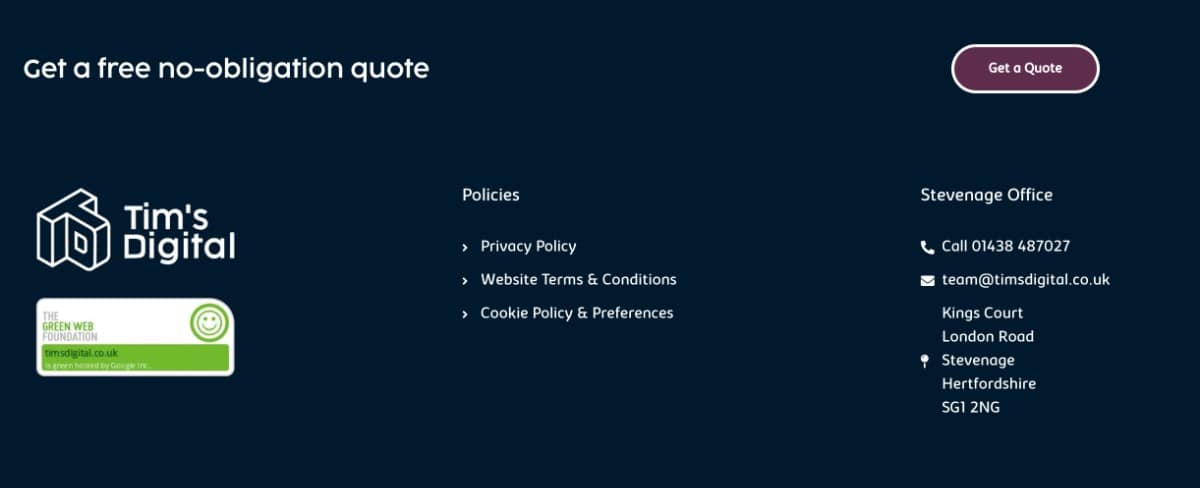Friday 22nd April, 2022 is Earth Day, a day to shine a light on all things that harm and help our planet’s precious environment. It began in 1970 with rare cross political support in the United States of America, aimed to bring focus to this important issue. The cause it champions has never been more important or urgent than it is now.
But what’s all this got to do with web design in Hertfordshire and websites? Well, a ton. In fact around 1.6 billion tons, which is amount of annual CO2 greenhouse gases the internet is responsible for. This is according to a study by Lancaster University.
This puts it around 3.7% of the world’s total, roughly equivalent to the airline industry. Every time someone streams a film, replies to an email and visits a website they are contributing to this.
So every website has a carbon footprint – and the more popular the site, the larger this becomes (perhaps so too does the responsibility to help reduce this).
The good news is that as a website owner, you can do your bit to help. Here are some ideas:
Use a hosting company that uses renewable energy to power its infrastructure.
Website hosts are the people who maintain the infrastructure that save and serve your website files for the world to see when they visit you. There are a number of companies who have been very pro-active in powering their data-centres using renewable energy. This is a great step forward over the last few years. If you want to check a website credentials, you can go here:
And if you as a website owner work with one of these forward-thinking hosts (we can help with this of course!) you can proudly display a Green Web Foundation image in your footer, like this little one here:

This is a powerful commitment to yourself and your customers that you are doing your bit to help.
Reduce the number and size of images
Images are a huge driver of a website’s carbon footprint. Compressing them so the file size is smaller not only reduces the carbon footprint, it also gives a nicer experience for your customers as they load more quickly. You can also use the most modern file types such as WebP which are lower in file size.
Also consider whether there are there some images you simply don’t need – what about the 50 logos of all the companies you’ve worked with, or the 10+ pictures in a carousel – do you really need all those? Small changes here can make a big difference.
Be careful with your fonts
Fonts are the different styles of design that make the words look different on different websites. Optimisation these files can reduce their size by up to 97%. Take a look at these options to reduce the impact:
- Limit font variations. Try to lessen the number of typefaces and different weights these typefaces have.
- Remove unnecessary characters – do you really need all those accents?
- Make sure you provide modern font file formats with better compression methods like WOFF and WOFF2.
Code like a ninja
There are too many things you can do to compress your code to write here but here are a few highlights:
- Use lazy-loading: things only get loaded when customers scroll to them and therefore require them to display
- Minify all CSS and JS files
- Remove unnecessary plugins
Use server caching
When you use server caching the page is loaded far fewer times from the server as it holds a saved version. This can significantly reduce resources for busy websites with relatively static content. You could also consider a Content Delivery Network to reduce bandwidth when serving content around the world.
Conclusion
There are many things you can do to reduce the carbon footprint of your website, from great hosting to great code to great content. Not only is this an amazing thing to do for our planet there is some more good news. Most of these things listed above have the side benefits of creating quick loading websites. Your customers will love you for this as it gives them a great experience. Google also likes and promotes sites managed this way. So you’ll not only be helping the environment but also helping your web engagement and presence too.
For any more advice, feel free to shoot us a question here.





